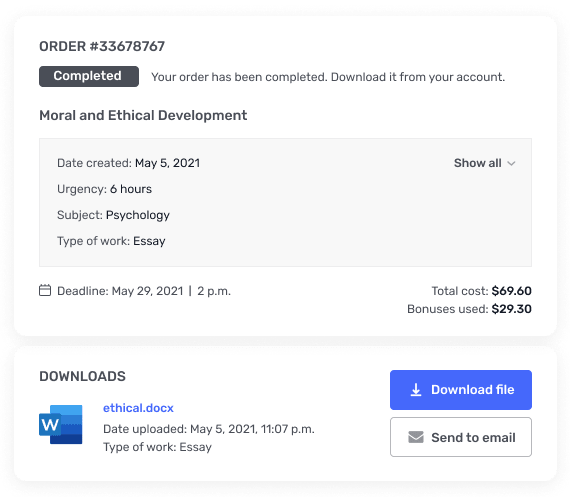MANAGEMENT ACCOUNTING GROUP CASE
MANAGEMENT ACCOUNTINGGROUP CASESpecial Term, School Year 2014-2015Panda MotorsPanda Motors is a small company that produces motors for specialized equipment soldprimarily to research laboratories and a major Philippine defense contractor. Theoperation is family owned and has been in business for 15 years. The company producesand sells three motors, named Motor 5, Motor 10, and Motor 15.Benedict was recently hired as an accountant and reports to the controller, Mel. Benedicthas been performing routine types of accounting work, but he would like to become moreinvolved in cost control and in analyses to help the managers make decisions. Recently,he performed a cost-volume-profit analysis of the company’s three products, as shownbelow. The analysis was based on data from last year’s accounting records.Prior Year DataSales at capacity (units)Actual volume (units)Price per unitTotal revenueVariable cost per unitTotal variable costFixed costsOperating profitRatios:Variable cost to salesContribution margin ratioUtilization of capacityBreakeven point:UnitsRevenuesAggregate300,000250,000P113.60P28,400,000P85.60P21,400,000P6,000,000P1,000,000Motor 5Motor 10Motor 15120,000P140.00P16,800,000P125.00P15,000,000P900,000P900,00080,000P120.00P9,600,000P62.50P5,000,000P4,500,000P100,00050,000P40.00P2,000,000P28.00P1,400,000P600,000P075.352%24.648%83.333%89.286%10.714%40.000%52.083%47.917%26.667%70.000%30.000%16.667%214,286P24,342,8571Benedict asked Mel for an opportunity to present his CVP analysis at the next weeklymanagers’ meeting. Mel had used CVP in the past, but had not formally presented it tothe managers. She asked Benedict if he had updated the prior year’s information forexpected changes. Benedict said he had thought about doing that, but did not knowwhere to get that kind of information. Mel suggested that he bring his laptop to themeeting and ask for updated information from the managers at the meeting.The following managers attended the meeting:Mrs. Tigress, Manufacturing ManagerMr. Po, Sales ManagerMr. Mantis, Purchasing Department ManagerMrs. Viper, Research and Development ManagerMr. Shifu, Engineering ManagerMr. Tai Lung, Vice PresidentMel introduced Benedict to the people he had not already met, and then the meetingbegan. Benedict’s presentation was the last item on the agenda, and Mel finallyintroduced him and explained Benedict’s interest in cost control and analysis.Benedict distributed copies of his CVP data and chart. He described the calculations andexplained how the chart indicated a profitable year, if the volume of sales activitycontinued as it had in the past. He explained that he had not had time to update theinformation and would like others at the meeting to give him information that wouldimprove his projections. Following are the comments at the meeting.Mrs. Tigress, Manufacturing Manager: You know, Benedict, the sales departmentestimates that unit sales should increase next year. And we’re at over 80%capacity now. I’m not sure about the exact size of the increase, but I know thatwe’ll be pushing the limits of our capacity, at least.Benedict: Once we estimate the sales volume, I can just put that into my projections andwe’ll know a lot more about next year’s profits.2Mrs. Tigress: Here’s the problem, though. If we increase production above 90 percent ofcapacity, we’ll need to invest more to operate the plant. We’re already planning tobuy equipment that will increase fixed costs by at least P25,000 a month. Inaddition, at 90 percent of plant capacity we’ll face bottlenecks, and productionmight slow down some. And from your data, it looks like Motor 15 is not reallyprofitable. What if we drop it? That would ease the capacity problems.Benedict: Well, I’m not sure exactly what will happen if we drop Motor 15. I’ve justspread the fixed costs across the units using an allocation. I’m not sure how fixedcosts would change if we drop Motor 15.Mr. Po, Sales Manager: Why do you want to drop Motor 15? Motor 5 is the productwith slowing sales. I expect it to drop by at least 20,000 units next year. But weought to pick up that 20,000 and maybe another 25,000 from Motor 15production. Motor 10 sales haven’t changed for a while and should continue toremain pretty stable.Benedict: Well, I’ll make those changes.Mr. Po: Wait, there’s more. We’ve been thinking about changing the price for Motor 15. Ithink we’re suffering from reputation problems with that motor. Some of ourcustomers have asked if we’re maintaining our usual quality at that low price. Mysales people seem to think that we could increase the price by 25% and stillincrease sales.Mr. Tai Lung, Vice President: As long as you’re considering possible changes for nextyear, let’s see what I can add to the picture.First, it seems that taxes aren’t considered here. We always give the governmentabout 30% of our profits. And then we’ll need to keep some money back forreinvestment. We’ve got to buy that equipment to increase capacity, and that willrequire another P500,000, at least.Second, the union wants a raise for the production crew. Our variable costs willprobably increase by at least 5%. If we give those people an increase, we’d betterbe thinking about raises for management, too. We usually give bonuses based onprofits and set aside maybe P500,000 for that. In addition, maybe we need torevisit the way that we give bonuses to the sales force. They get their salaries,plus a commission per unit based on price. Maybe we should base their bonus onthe contribution margin they bring in, instead of sales. Third, I guess it’s time tochange our product emphasis. No one seems to know which motor is mostprofitable. The sales staff are just responding to demand and not really pushingany of our motors. Right now Motor 5 is still covering its costs, but if we producemore of Motor 15, it’s likely that Motor 5 will become a loser for us. Maybe it’stime that we drop it. Can you incorporate these changes right now?3Mel: Thanks, Mr. Tai Lung. I thought we’d get a good discussion going about futureplans once Benedict made his presentation. This CVP approach is something thatwe haven’t used before, but as you can see, you’ve all got information to share.Benedict will need some time to rework his analysis with this new information,but I’m sure he can get a revision out to us by tomorrow morning.It seems that Benedict’s presentation is based on some important assumptions.Most of the questions that were raised were really about those assumptions. Itmight help us all if Benedict lists those assumptions so that we can see how theyinfluence the analysis.Then, he’ll have to incorporate the increase in unit sales and see what’s going onwith individual product lines. Also, let’s see how things change with changes inproduct mix, and we may want to drop Motor 5. Benedict will have to incorporateprice changes and consider taxes, investment, and raises. Then he can look at theeffect of product emphasis.That should about do it. Once we get Benedict’s revised analysis, we can all takea look at the numbers and think about them for a few days. We’ll meet again nextweek. Benedict can bring the laptop, and we can do some “what if” analysis onthe spot.As she was leaving, Mrs. Tigress said, “Benedict, before we meet next time, go down tothe production floor and get information. It’s a waste of time for all of us to meet just togive you information. And send the CVP out ahead so we can think more about changesthat could occur next year. Also, bring a computer projector so we can all see how anychanges affect overall results, then we can make plans for the next period with betterinformation, and we’ll not be caught off guard so often.Benedict was annoyed that Mel hadn’t told him to go down to the production floor andover to marketing earlier. He also realized that he should have thought about bringing aprojector. When he asked Mel about it, she said, “Sometimes when we’re introducing anew type of analysis, people need to understand how important their information is to us.Today several people contributed important pieces of information that affect the accuracyof our results. Next time you go out to ask for it, they’ll know that they need to give ustheir best estimates. Otherwise, they might just give us something off the top of theirheads because they don’t want to take time from other tasks.Required:A. Describe the assumptions implicit in Benedict’s calculation of the breakeven point.(List the general assumptions of CVP analysis, and then apply those assumptionsspecifically to this case.)B. Using the information given to Benedict during the meeting, prepare a revised CVPanalysis. Use a spreadsheet designed to allow you to perform sensitivity analyses.Explain the various decisions you made for volumes, selling prices, costs, and salesmix.4C. Calculate the margin of safety in revenues and the operating leverage.D. Does it appear that the company should drop any of its motors? Explain.E. Perform the following sensitivity analyses:1. At what level of operations will the investment in capacity be covered, ignoringthe anticipated increase in labor costs and salaries?2. At what level of operations will the company be able to meet union demands,ignoring any bonuses for management?3. At what level of operations will the company be able to increase capacity andgive laborers and management raises?4. How much can the company spend on new investments for additional capacity,above the planned level of investment?F. Explain how and why biases might affect the CVP analysis for this company.G. Suppose you are Benedict, and you would like to obtain more information toimprove the quality of your CVP analysis. List several pieces of information youwould like to obtain. For each piece of information, explain its usefulness andidentify where you might obtain it.H. How might the managers of Panda Motors use CVP analysis? Identify severaldifferent types of decisions they might make and explain how CVP analysis could beuseful for each decision.Paper size: Letter (8.5” x 11”)Margins:o Top: 1”o Bottom: 1”o Left: 1.5”o Right: 1”Font and font size: Times New Roman 12Paragraph and alignment: JustifiedLine Spacing: SingleCovering Page should include:o Names of the group members (alphabetically arranged with seat numbers)o ACCTBA3/ACTMANA Sectiono Date Submittedo Submitted to (Name of Professor)Number of pages (excluding the covering page):o Minimum: 5pageso Maximum: 8 pageso Note: Insert page number except on the cover pageDeadline: Upon discretion of Faculty oro MW class: July 13, 2015 (Monday)o TH class: July 14, 2015 (Tuesday)Please be reminded of the Student Handbook policy on “Academic Honesty”.5




